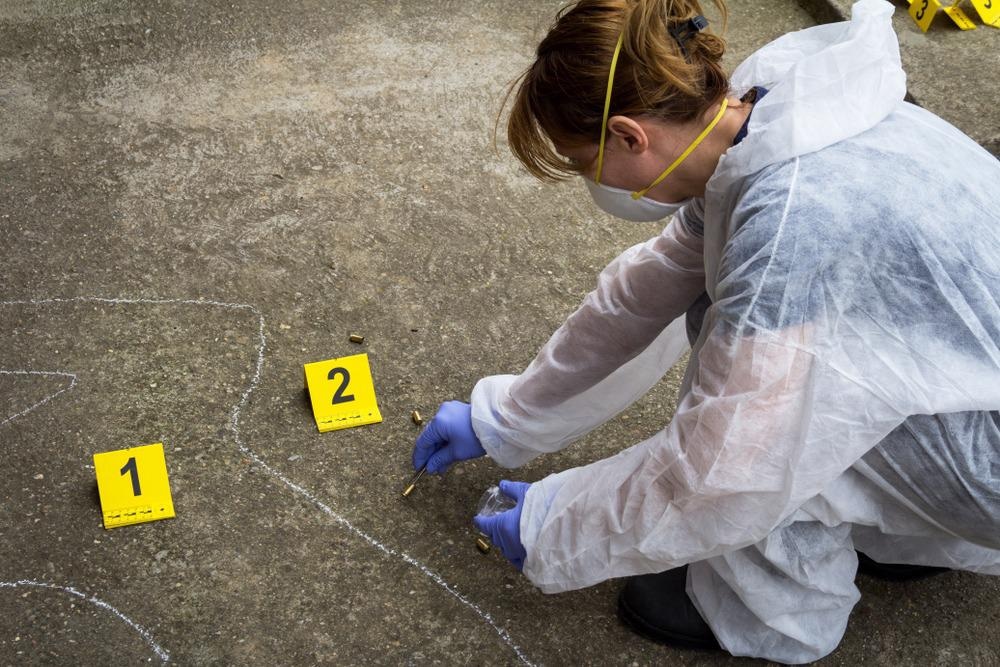
Image Credit: Zoka74/Shutterstock.com
The Principles of Infrared Spectroscopy
Infrared radiation was discovered by astronomer Sir William Herschel in 1800 and was first produced and measured in 1881 by two scientists, Abney and Festing, using photographic plates. Perhaps most significant in the development of infrared spectroscopy is when William W. Coblentz conducted a large-scale study of spectra produced by various compounds, the results of which were published in 1905. This dataset allowed researchers to understand the character of atomic groups in relation to specific absorptions in the mid-infrared range.
The infrared spectroscopy method introduces infrared radiation to a sample to discover its characteristics based on the sample’s absorption spectroscopy. An infrared spectrometer is used to introduce an infrared spectrum to the sample, which is absorbed by the molecules within the sample at different frequencies. This absorption is directly related to the interactions with the vibrations of the chemical bonds associated with the sample’s atoms. Different levels of energy are required depending on the type of chemical bond. The absorption level is, therefore, proportional to the energy needed for the bond.
Information regarding the sample’s levels of absorbance can be plotted on a graph where the y-axis represents the level of absorbance and the x-axis represents the wavelength. This identifies the chemical composition of samples if they are a known, including solid, liquid, or gas. This information can determine the sample’s functional groups and structure, reveal details on how a chemical reaction is progressing, detect impurities, and be used to conduct quantitative analyses.
Since its invention, infrared spectroscopy has been adopted by a wide range of industries that currently use the technique in various applications, such as helping to monitor environmental contaminants and to assess blood alcohol levels of suspected drunk drivers. Here, we discuss its applications in the field of forensics.
How is Infrared Spectroscopy used in Forensics?
Because of its use in identifying unknown substances, infrared spectroscopy has become heavily relied on in many areas of forensics. The technique has become a well-established method to help law enforcement examine all kinds of evidence left behind at a crime scene. Samples of paint, ink, fuels and biological traces such as sweat and hair can all be investigated using infrared spectroscopy.
Over the years, scientists have been able to update the infrared spectroscopy technique to detect tiny sample sizes, such as trace evidence that may be crucial to a criminal investigation.
Infrared spectroscopy has developed so that samples no longer have to be transported to a dedicated lab to be tested. The equipment is now portable and can be taken to the scene so as not to disturb the evidence.
Infrared spectroscopy is a non-destructive technique, which is beneficial to investigating crime scenes and evidence where preservation of the samples is of vital importance if future analyses are required.
The range of infrared spectroscopy applications in forensics is varied. The technique can be used to examine ink and identify forgery by confirming if documents have been altered or are not authentic. With infrared spectroscopy, the ink does not need to be extracted from the paper to conduct this analysis, therefore, leaving the evidence intact and undamaged.
Biological substances, such as sweat, can also be investigated using infrared spectroscopy. Sweat can leave prints on surfaces and objects at a crime scene. These sweat prints are composed primarily of salts, oils, and proteins, which can all be identified using infrared spectroscopy. The combination of these elements can help determine which individual created the sweat print in question.
Fibers are often found at a crime scene. Synthetic materials such as fabric can leave behind fibers which can hold the key to crucial facts such as what the victim or perpetrator was wearing and can help link locations with either the victim, perpetrator, or both.
Fibers from natural sources can also be left at the scene, such as those left by animals or human hair. Analysis of human hair, in particular, can be critical to an investigation as it can help link a suspect to the scene of the crime. Infrared spectroscopy can even detect traces of styling products used on the hair, which can help give clues as to person’s identity.
Infrared spectroscopy can also be used in paint analysis; it can help identify the type and color of a paint chip, which is often crucial in identifying vehicles involved in car accidents where one vehicle has fled the scene. This is because paint chips frequently result from collisions.
There are many areas of forensics in which infrared spectroscopy has already become an established technique for analyzing evidence. As its use continues in this sector, we can expect further developments of the technology, making it even more beneficial and perhaps opening up its use in new applications.
References and Further Reading
Kalasinsky, K., Magluilo, J. and Schaefer, T., 1993. Hair analysis by infrared microscopy for drugs of abuse. Forensic Science International, 63(1-3), pp.253-260. https://www.sciencedirect.com/science/article/abs/pii/037907389390278I
Lv, J., Zhang, W., Liu, S., Chen, R., Feng, J., Zhou, S. and Liu, Y. (2016). Analysis of 52 automotive coating samples for forensic purposes with Fourier transform infrared spectroscopy (FTIR) and Raman microscopy. Environmental Forensics, 17(1), pp.59-67. https://www.tandfonline.com/doi/abs/10.1080/15275922.2015.1091403
Takamura, A., Watanabe, K., Akutsu, T. and Ozawa, T., 2018. Soft and Robust Identification of Body Fluid Using Fourier Transform Infrared Spectroscopy and Chemometric Strategies for Forensic Analysis. Scientific Reports, 8(1). https://www.nature.com/articles/s41598-018-26873-9
Zięba-Palus, J. and Trzcińska, B. (2013). Application of Infrared and Raman Spectroscopy in Paint Trace Examination. Journal of Forensic Sciences, 58(5), pp.1359-1363. https://onlinelibrary.wiley.com/doi/abs/10.1111/1556-4029.12183
Disclaimer: The views expressed here are those of the author expressed in their private capacity and do not necessarily represent the views of AZoM.com Limited T/A AZoNetwork the owner and operator of this website. This disclaimer forms part of the Terms and conditions of use of this website.